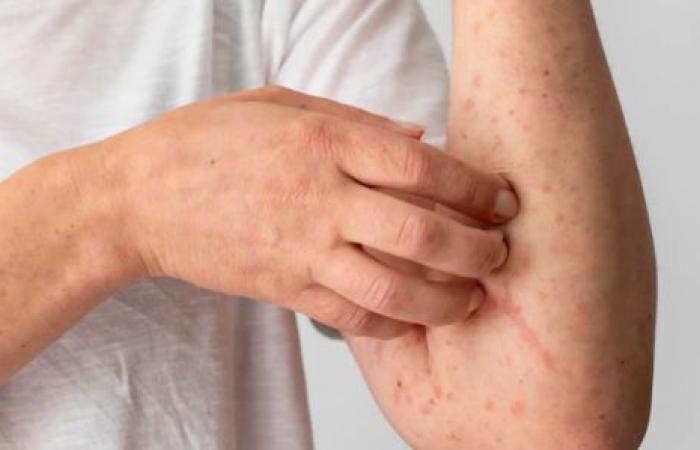How Does Cancer Start? Genes and Cancer
Cancer cells typically display abnormalities in the mechanisms that regulate normal cell proliferation, differentiation, and survival. Taken together, these characteristic properties of cancer cells provide a description of malignancy at the cellular level. Hormones, particularly estrogens, are important as tumor promoters in the development of some human cancers. The risk of endometrial cancer is therefore substantially increased by long-term postmenopausal estrogen replacement therapy with high doses of estrogen alone.
- We can also help you find other free or low-cost resources available.
- When this occurs, this is called invasive breast cancer.
- This is called angiogenesis and it is one of the reasons that tumours grow and get bigger.
- Cancer can start when just one of the cell begins to grow and multiply too much.
- Tumor cells, however, continue to proliferate independent of cell density.
- A primary distinction between cancer cells and normal cells in culture is that normal cells display density-dependent inhibition of cell proliferation (Figure 15.8).
Improving the lives of people with cancer is more urgent than ever.Donate now. Our definition of neuroendocrine tumors has more information. Our pages on brain and spinal cord tumors in adultsandbrain and spinal cord tumors in childrenhave more information.
The formation of such new blood vessels is important not only in supporting tumor growth, but also in metastasis. As discussed in Chapter 13, programmed cell death, or apoptosis, is an integral part of the differentiation program of many cell types, including blood cells. Many cancer cells fail to undergo apoptosis, and therefore exhibit increased life spans compared to their normal counterparts. This failure of cancer cells to undergo programmed cell death contributes substantially to tumor development.
Usually, surgery is used to remove one or more of the axillary nodes to help check for cancer spread. Cancer found in the lymph nodes affects the staging and treatment of breast cancer. Types of cancer are usually named for the organs or tissues where the cancers form. For example, lung cancer starts in the lung, and brain cancer starts in the brain. Cancers also may be described by the type of cell that formed them, such as an epithelial cell or a squamous cell. Although it is sometimes called stage 0 cancer, it is not cancer because the abnormal cells do not invade nearby tissue the way that cancer cells do.
To understand colorectal cancer, it helps to know about the normal structure and function of the colon and rectum. Our hormones carry messages to our cells, triggering the cells to take action. These messages are carried by our blood through our blood vessels.
Every cancer starts with DNA changes
Voiceover – Cancer starts when a healthy cell becomes damaged, and starts to multiply out of control. From there, the cancer can progress to squamous cell carcinoma, where it attacks cells that form the skin’s inner lining. The epidermis is full of basal cells, which are responsible for creating new skin cells. To understand how cancer can originate, it can be helpful to understand how regular cells and tissues function and develop. Some types of polyps can change into cancer over time , but not all polyps become cancer.
The most important issue in cancer pathology is the distinction between benign and malignant tumors (Figure 15.1). A tumor is any abnormal proliferation of cells, which may be either benign or malignant. A benign tumor, such as a common skin wart, remains confined to its original location, neither invading surrounding normal tissue nor spreading to distant body sites. A malignant tumor, however, is capable of both invading surrounding normal tissue and spreading throughout the body via the circulatory or lymphatic systems . Only malignant tumors are properly referred to as cancers, and it is their ability to invade and metastasize that makes cancer so dangerous.
Now there are many cancer treatments available that target gene mutations found in cancer. A few of these treatments can be used by anyone with a cancer that has the targeted mutation, no matter where the cancer started growing. The leukemias provide a particularly good example of the relationship between defective differentiation and malignancy. All of the different types of blood cells are derived from a common stem cell in the bone marrow (see Figure 14.44).
Most cancer-causing DNA changes occur in sections of DNA called genes. Inside the nucleus are chromosomes made up of thousands of genes. Genes contain long strings of DNA , which are coded messages that tell the cell how to behave. A secure website for patients to access their medical care at Moffitt.
Normal cells proliferate in culture until they reach a finite cell density, at which point they become quiescent. Tumor cells, however, continue to proliferate independent of cell density. The cell splits, but each new cell doesn’t have the right number of chromosomes. So some cells don’t have the correct number of genes and others have extra copies. These faulty cells no longer have the correct instructions, so they start to multiply out of control. During pregnancy the body will produce additional oestrogen and progesterone, which trigger further growth and development of the breast to prepare mothers for breastfeeding.
About Colorectal Cancer
As discussed in Chapter 13, the proliferation of most cells is controlled, at least in part, by polypeptide growth factors. For some cell types, particularly fibroblasts, the availability of serum growth factors is the principal determinant of their proliferative capacity in culture. All of them aim to remove the malignant tumor, or at least limit how much the cancer can grow and spread. Medication or various types of radiotherapy are sometimes used to shrink tumors before surgery. These treatments might be used after surgery too, to destroy any cancer cells that are left and prevent the cancer from growing back .
The female breast goes through many changes over a lifetime – from birth, puberty, pregnancy and breastfeeding, right through to menopause. Each finger is covered with skin and each finger has a fingernail. If we cut our finger, the skin cells will start replicating and create new skin to heal the wound. But the cells will not create extra fingers, even if we lose one. The rules are clear for those cells, and they keep to the rules.
Cancer is caused by certain changes to genes, the basic physical units of inheritance. Genes are arranged in long strands of tightly packed DNA called chromosomes. Ignore signals that normally tell cells to stop dividing or to die . If you are eligible for a virtual appointment, our scheduling team will discuss this option further with you. Each lobe is made up of many smaller sacs called lobules .
What Are the Most Common Types of Cancer in the U.S.?
Depending on the type and severity of a patient’s lung cancer, surgery, radiation, chemotherapy, or a combination of these treatments will occur. In some cases, specific targeted therapy or even immunotherapy may help a lung cancer patient. Lung cancer can originate anywhere in the respiratory system, which includes the lungs, bronchi, trachea, larynx, pharynx and nasal cavity. Cancer that starts in the respiratory system and spreads to another tissue or organ is still classified as lung cancer, regardless of the location of the metastatic tumor. More specifically, the original lung tumor is referred to as primary lung cancer, and the metastatic tumor is referred to as secondary lung cancer.
But because some carcinomas in situ may become cancer, they are usually treated. Even if one cancer cell is left behind, it can grow and divide to become a new tumour. This is why doctors sometimes use another treatment right after the first treatment, such as giving chemotherapy after surgery. The goal of adjuvant therapy is to help prevent the cancer from coming back in case some cancer cells are left behind in the body.
These tumors, which may make higher-than-normal amounts of hormones, can cause many different symptoms. There are different types of brain and spinal cord tumors. These tumors are named based on the type of cell in which they formed and where the tumor first formed in the central nervous system.





